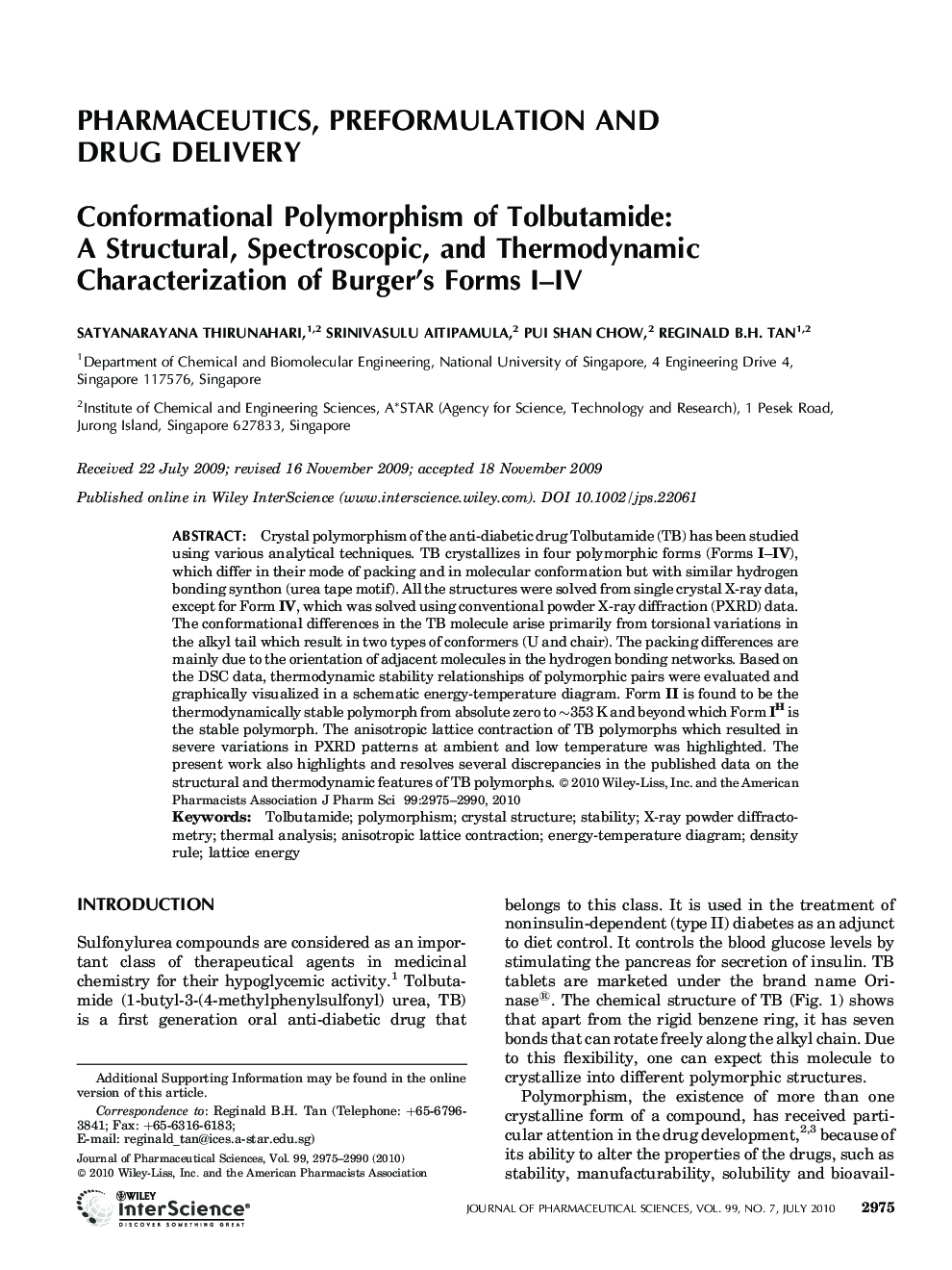| Article ID | Journal | Published Year | Pages | File Type |
|---|---|---|---|---|
| 2486264 | Journal of Pharmaceutical Sciences | 2010 | 16 Pages |
Abstract
Crystal polymorphism of the anti-diabetic drug Tolbutamide (TB) has been studied using various analytical techniques. TB crystallizes in four polymorphic forms (Forms I-IV), which differ in their mode of packing and in molecular conformation but with similar hydrogen bonding synthon (urea tape motif). All the structures were solved from single crystal X-ray data, except for Form IV, which was solved using conventional powder X-ray diffraction (PXRD) data. The conformational differences in the TB molecule arise primarily from torsional variations in the alkyl tail which result in two types of conformers (U and chair). The packing differences are mainly due to the orientation of adjacent molecules in the hydrogen bonding networks. Based on the DSC data, thermodynamic stability relationships of polymorphic pairs were evaluated and graphically visualized in a schematic energy-temperature diagram. Form II is found to be the thermodynamically stable polymorph from absolute zero to ~Â 353Â K and beyond which Form IH is the stable polymorph. The anisotropic lattice contraction of TB polymorphs which resulted in severe variations in PXRD patterns at ambient and low temperature was highlighted. The present work also highlights and resolves several discrepancies in the published data on the structural and thermodynamic features of TB polymorphs.
Keywords
Related Topics
Health Sciences
Pharmacology, Toxicology and Pharmaceutical Science
Drug Discovery
Authors
Satyanarayana Thirunahari, Srinivasulu Aitipamula, Pui Shan Chow, Reginald B.H. Tan,
